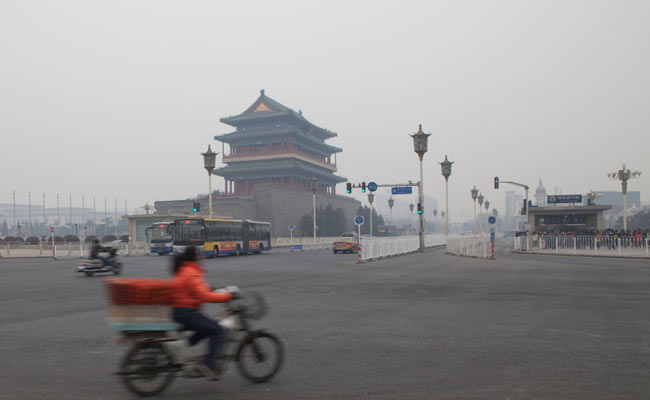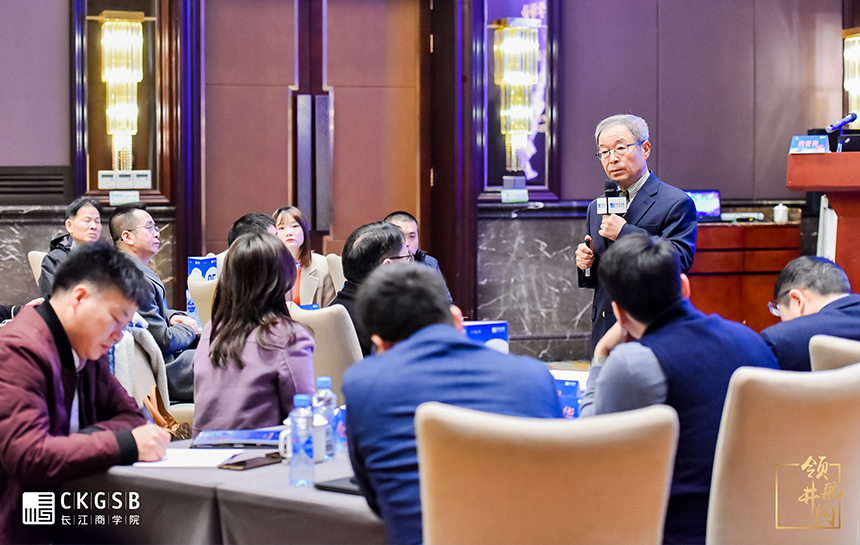In a bid to improve the environment, the Chinese government is considering imposing a pollution tax. But how exactly should it determine the tax amount?
Firms are constantly grappling with how much to charge for their products based on their costs and the market conditions they face. China’s central government may soon face the same difficult price-setting problem but in this case, for a product that no one wants—pollution. That is exactly what China’s State Council is currently considering. The Council recently released a draft law that proposes to tax various kinds of pollution. We can actually think about there being a market for pollution and the tax chosen by the government as its price. Let’s first think about why this is and then ask whether the tax is a good idea.
The draft law proposes a tax of RMB 1.2 per unit of air pollution[1] so let’s take that as an example and see how it acts like a price. Firms can reduce air pollution by burning cleaner fuel, cleaning emissions before they enter the atmosphere, changing to cleaner production technologies, or producing less output all of which cost money. Unless a firm realizes other benefits from reducing their air pollution (altruistic or public relations motives) once the tax is in place, it will eliminate its pollution output if it costs less than RMB 1.2 because this is better than paying the tax. On the other hand, if it costs it more than RMB 1.2 it will pollute and pay the tax since this is better than spending even more to eliminate the pollution. The tax is like a price because it determines output in the “market”: firms that cannot eliminate pollution for RMB 1.2 or less will produce and pay the tax while all other firms will not produce. Like a price in a regular market the tax has the advantage of reducing pollution at the lowest cost—only those with the lowest abatement costs will eliminate their pollution to avoid the tax.
This means that the government can control the amount of pollution by adjusting the tax. If there is too much pollution, the government raises the tax and fewer firms produce. Conversely, if there is too little pollution the government lowers the tax and more firms produce. How can there be too little pollution? Reducing pollution costs money—not just the cost of removing the pollution, but also reductions in output. For example, taxing air pollution will increase the cost of making steel. The increased cost will raise steel prices and thereby dampen construction. If these abatement costs exceed the benefits of less pollution, then there is too little pollution.
So when is pricing pollution a good idea? It is essential that all pollution sources can be monitored and forced to comply with the tax otherwise evasion is possible. This is probably fairly obvious because it applies to any tax. But there are two less obvious cases in which pollution taxes are not a good idea. First, some types of pollution are so harmful that none should be allowed. For example, there is no safe level of lead exposure. Therefore, it is better to completely outlaw lead pollution with a severe penalty for noncompliance.[2] Second, for some types of pollution taxation would result in it being concentrated in only a few areas. For example, water pollution is local—it harms only those who use the local water source for drinking or farming. If factory equipment in some areas is older and less advanced, abatement costs will be high and taxing water pollution will result in a high concentration of pollution in those areas. These are likely to be poorer areas so the tax will be very unfair. In this case, the government should impose a uniform limit on pollution across all areas.
While taxing water pollution may be problematic, air pollution is a good candidate. Air pollution is harmful but the optimal amount is not zero. Eliminating all air pollution would mean no factories and no cars. Air pollution is also unlikely to concentrate in a few areas as it tends to drift in the atmosphere. As long as air pollution can be measured and a tax enforced, taxation would be an effective approach to cleaning up China’s air. Since the Council’s draft law mentions taxing air, noise, water and solid waste pollution, the government should carefully consider each of these in light of these criteria.
Assuming that taxation is a good approach, how high should the government set the tax? It should be set based on the benefits from pollution reduction. The tax directly tells you how much the pollution reduction will cost. If, for example, eliminating a unit of air pollution is worth RMB 2 in improved health, comfort, and longevity, then the tax should be set at RMB 2. This will align the abatement costs with the benefits achieved.
Economists like me usually push for China to move to a more market-oriented economy where competition determines the price in a market. However, the “market” for pollution is one in which I would potentially welcome a return to the government acting as a central planner and setting a price.
Last time I discussed how externalities have resulted in dangerous levels of antibiotic resistance in China. Recent research from the Nanjing Disease Control Bureau in Jiangsu reveals that externalities in pesticide use may have resulted in mosquitoes in China that are resistant to foreign-produced repellants.
[1] A “unit” depends on the type of air pollutant. For example, for sulfur dioxide it is 0.95 kilograms.
[2] Another way of saying this is that the tax should be set so high that no firm can afford it because the pollution is so harmful it is worth any cost to prevent it.

















